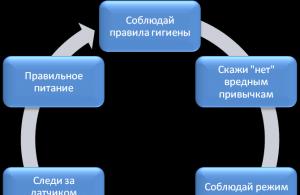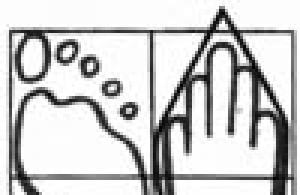Content
The Lada Kalina car has come a long way before its production in 2004 - the first prototypes appeared back in 1999. After the launch of production, options appeared not only in the sedan, but also in the station wagon and 5-door hatchback. The car was equipped with three different engines: a 1.4-liter 16-valve engine and two 1.6-liter units in eight and sixteen-valve versions.
Since May 2013, AvtoVAZ began production of the Lada Kalina 2 station wagon and hatchback, which widely used the technical solutions of the first generation Kalina and Grants. The second "Kalina" practically retained the previous line of power units, but a new 1.6 liter engine appeared, developing a power of 106 hp - it replaced the 1.4-liter sixteen-valve.
Lada Kalina 1st generation 8-valve
The base engine for Lada Kalina is a VAZ-21114 4-cylinder naturally aspirated gasoline engine with in-line arrangement of cylinders and 8 valves. With a volume of 1.6 liters, it is capable of developing a power of 81 hp. and a torque of 120 Nm. This motor is aggregated exclusively with traditional 5-speed mechanics.
Real fuel consumption Lada Kalina 1.6 8V
- Anton, Krasnodar. I drove a Subaru until the engine blew. There was no money to repair (and the amount is very large), it turned out to change my Japanese car for the domestic auto industry in the person of the 2002 Lada Kalina with an eight-valve 1.6-liter engine. Everything turned out to be not as sad as I thought, but the consumption is too big - 8 liters on the highway, up to 12 in the city.
- Sergei, Kirov. When buying, I focused on a car in the price range up to 200 thousand. It is clear that for such money only the domestic auto industry, and then you need to carefully look. In general, I found a good version of Kalina with an eight 1.6 engine. The equipment is of course the simplest - but I'd rather let the body be alive and hodovka than Conder in the car. Consumption is normal - the engine does not eat oil, about 7 liters on the highway, no more than 10 in the city.
- Semyon, Pyatigorsk. I chose between Grant and Kalina - the choice turned out to be in favor of the latter, since it is cheaper. Of course, if you get to know each other better, then the domestic assembly and “high quality” are visible at a glance, but for such a price only the Chinese, and their repair is still hemorrhoids. It would be possible to buy a used foreign car, but it is not easy to get spare parts for them from us, but for VAZs they are like dirt. In general, chose the best of the worst. In terms of consumption - on a serpentine it goes no less than ten per hundred in mixed mode - another confirmation that "we choose the best from the worst."
- Kostya, Volgograd. At the time of purchase, he had an amount of 300 thousand rubles - this is 2012. Among foreign cars for that kind of money - only slag. Of the acceptable options, only Lada Kalina or Grant, but her turn for six months. As a result, I bought a Kalina hatch with an eight-valve engine. Consumption is small (as after the VAZ-2105) - 10 in the city, 8 on the highway. But the build quality is a frank g..o.
- Alexander, Kurgan. When the question arose in 2010 about buying a car, there were the following requirements: a mechanical gearbox, high ground clearance (well, more or less), comfortable geometry with small overhangs, and a maximum of a couple of years after release. The result - Lada Kalina sedan 2008, eight-valve engine, plus conder, engine heating and wheels. I drive carefully, so the consumption in the city is no more than 8.5 liters. At a distance it goes about 6, maybe a little more.
Lada Kalina 1.4 l 1st generation
A 1.4-liter in-line 16-valve VAZ-11194 gasoline engine develops 89 hp. and is capable of delivering a torque of 127 Nm. The engine is quite dynamic, but it shows itself better at high speeds, which affects its efficiency - in terms of fuel consumption, it is not inferior to its 1.6-liter counterparts.
Fuel consumption reviews Lada Kalina 1.4 16V per 100 km
- Maxim Orenburg. The purchase of Kalina was, one might say, accidental - initially I considered exclusively foreign cars, but there was nothing in the range of 250-300 thousand. The body is a sedan, a 1.4-liter engine with 16 valves, a mechanic's box, the year of manufacture is 2011. In principle, everything is fine - minor problems do not count. I often drive in highway-city mode, so I think the consumption is like this - it turns out I have 6.8 l / 100 km.
- Boris, Ust-Orda. The car was needed for work, and the budget was strictly limited. Chose Kalina station wagon, 2008 release with a mileage of 43,000 and a 1.4 liter engine. It was possible to take an eight-valve one, but I wanted a better package, since there is a lot of long-distance travel. Consumption on the highway - about 6 liters, no more, in the city about 2 liters more.
- Eugene, Togliatti. At first I was looking for Kalina with a Priorov 16-valve engine, but I did not find any offers for the money that I had. A variant with a 1.4-liter engine turned up - good equipment, mileage of only 20 thousand and one owner. I took it. Around the city in winter, about 10 liters come out, I rarely drive on the highway, so I can’t say for sure.
- Fedor, Surgut. Kalina is my first car, because rights received only in 2013. But since my wife had them before, we got a car back in 2010. As for the motor, it’s a fairly economical engine, on average we get 9 liters per hundred, but if you turn on the conder, you really feel the dips and normal traction generally only appears over 2500 rpm.
Lada Kalina 1.6 16-valve
The well-established "Priorovsky" 16-valve VAZ-21126 engine with a volume of 1.6 liters and a power of 98 hp. was also installed on the first generation LADA Kalina. Versions with such an engine are considered the best in the Kalin lineup - it is not only the most powerful, but also the most economical and reliable of all that are installed on cars of this model.
Real fuel consumption Lada Kalina 1.6 16V
- Yuri, Novosibirsk. Bought the car in 2011 in the winter, immediately after obtaining rights. Naturally, he chose the most budget option up to 300 thousand. Foreign cars do not count, for such money they are poor at all. I wanted to take Grant at all, but I didn’t want to wait, so I decided to buy Kalina in a station wagon with the most powerful engine. At first, I just went crazy with the flow - about 20 liters came out in the city in winter, but after running in, the flow dropped sharply and became no more than 10-12 liters in winter and up to 10 in summer. On the highway 4.8 - 5.5 liters per hundred.
- Sergey, Novorossiysk. I considered Kalina only with a six-valve, which I know from the VAZ-2112. It is torquey, quite resourceful and economical. Since there is an on-board computer, it is possible to find out the consumption without manually calculating it, but according to the readings. So, in the city, on average, I have from 7.1 to 8.6 liters, and on the highway - 4.8 - 5.0 liters.
- Fedor, Kostroma. I used to be the owners of the "seven", after its sale I managed to save a little and thought about buying a new car. They considered only the VAZ - there was only enough money for a new one, and the devil is not so terrible as everyone paints him. For the price it's a great car. But then I came across a version of Kalina station wagon with a mileage of 89 thousand km, but in excellent condition and max configuration, with a 1.6 16-valve prior engine. Beauty - consumption in the city up to 8.5 liters, on the highway 6 liters, does not make noise, rides well and is comfortable.
- Maxim, Pryamitsyno. Kalina, 1.6 16V, 2011 release, station wagon. When buying, I chose an inexpensive and domestic manufacturer with a mileage of 2-3 years (follows from the first requirement). The choice fell on the 16-valve Kalina station wagon. Having traveled for 3 years, I can say that for my money the car is not bad, but not without flaws. What pleased me was the consumption, in the city 8 liters, on the highway up to 6 liters.
- Denis, Moscow. I bought Kalina in 2015 in the summer. Station wagon body, year of manufacture - 2011, 1.6-liter engine with 16 valves, in a luxury configuration. The condition is good, it eats little gasoline - in the city (Moscow, I ask you not to forget) - a maximum of 9 liters, outside the city - 5.5-6. Although now, if I chose, it would be better to buy Renault Logan.
Lada Kalina 2, 1.6 l 8V
For Kalin of the second generation, the base engine is the VAZ-11186. This is an 8-valve 1.6-liter gasoline engine designed for the Lada Grant and is an improved version of the VAZ-11183 engine. He is able to develop a power of 87 hp. and a moment of 140 Nm, and according to exhaust standards it complies with Euro-4 standards. The motor is aggregated with a 5-speed mechanics.
Gasoline consumption per 100 km Lada Kalina 2 1.6 8 valves. Reviews
- Kirill, Ryazan. Initially, he took a car only for the winter - by the summer he had to collect money and buy himself something more worthy. Therefore, I didn’t bother much and bought Lada Kalina 2 with the simplest 8-valve engine manufactured in 2014. Skated exactly 8 months and sold with a pure heart. Consumption in my winter came out about 8 liters, there were no breakdowns.
- Anatoly, Togliatti. I bought a car 3 months ago - Kalina 2 station wagon, 87 hp engine, mechanics. For me, the most important thing is that it’s convenient to carry a bunch of garbage at work, the engine is economical - more than 10 liters came out in the city during the run-in, then it dropped to 8.5 liters.
- Alexander, Nadym. The issue price is 500 thousand. Not enough for a foreign car - but enough for the new Kalina 2, though with an eight-valve engine. I have already driven 15,000 km - the average consumption according to the on-board computer is 7.1 ... 7.4 l / 100 km.
- Maria, Perm. LADA Kalina 2, 1.6MT, 2016 release. Chose hatch — I like it. Spare parts are cheap - on the "eternal Japanese" you can stupidly go broke. I'm sure I won't know grief for 5 years. In addition, it is very economical - it consumes little oil, and my consumption is no more than 6 liters - I really travel out of town more, there is quite a bit in the city itself.
Lada Kalina 2, 1.6 l 16V 98 hp
Unlike the previous generation, the Priorov 16-valve engine is the most common and is installed on the standard Lada Kalina. This 98-horsepower 1.6-liter engine can be assembled not only with the traditional 5-speed manual, but also with the Jatco JF414E 4-speed automatic.
Fuel consumption per 100 km Lada Kalina 2 16V. Reviews
- Yuri, St. Petersburg. Mother bought a car - before that she had a Matiz with a 0.8 liter engine and wild fuel consumption for such a baby. After he began to crumble, he decided to get her something new so that she would not be a repairman. As an inexpensive option, I chose Lada Kalina 2 with a five-door body and a prior engine. I also took a machine gun - she got used to it on Matiz, it’s really hard to retrain. A good car - decent dynamics (I did not expect it myself), more or less comfortable equipment. True, due to the long gears of the machine, the consumption in the city is about 11 liters, on the highway - 8.
- Stanislav, Kemerovo. Lada Kalina 2, wagon, 1.6MT, 2014. I kept an eye on the Duster, but due to the depreciation, it skyrocketed in price and I switched to something simpler. On the advice of a friend from the service station chose Kalina second. More or less comfortable, but most of all I like the consumption - I don’t get more than 8 liters, though I mostly drive on the highway.
- Maxim, Ryazan. They chose a car more for my wife - I go to the office 90% of the time, and then she takes the child to take, then go on business. We settled on a white Kalina 2 in a hatchback body, with a Priorov engine and an automatic gearbox - for a woman, I think it is very convenient. True, there is also a minus here - in the city with a machine gun, the consumption is about 10-11 liters - a bit too much, as for Kalina.
- Oleg, St. Petersburg. Before Kalina, there was a Nissan Tiida, but I successfully crashed it, and in such a way that I didn’t receive anything from the insurance company. As a result, I had to buy Kalina 2, but I took a new one - I don’t like poking around in cars. In terms of comfort and build quality, of course, Tiida loses, but all the dopas and spare parts are much cheaper, and the fuel consumption is 9 liters per hundred square meters - this despite the fact that I have an automatic transmission.
- Kirill, Surgut. I bought a car for my wife, so I took a hatch with a gun and a motor from Priora. Persuaded her to take the station wagon - did not want to. Although the hatch is quite neat and compact, and my wife’s consumption in the city goes up to 9 liters, or even 8.
Lada Kalina 2, 1.6 l 16V 106 hp
The VAZ-21127 engine is a modified version of the "Prior" 16-valve engine. With a slight increase in torque to 145 Nm, it was possible to increase power to 106 hp, and the installation of an adjustable start improved the dynamics of the motor and made it more elastic. This allows you to complete the motor with both mechanics and a 4-speed automatic and a new 5-band AMT 2182 robot.
Lada Kalina 2. Knocking fingers in the engine
The piston pin is an integral element of the crank mechanism. The specified part is the axis of movement of the connecting rod in the place where the connection with the piston is realized. In other words, the piston pins make it possible to create a swivel-type movable connection in relation to the connection of the connecting rod head and the piston.
The loads that the piston experiences as a result of the combustion of the charge of the fuel-air mixture in the internal combustion engine cylinders are also transferred to the piston pins. In parallel, the finger is affected by the force of inertia, the bending force. In this article, we will look at why fingers knock in the engine during acceleration, why fingers knock under load, etc.
Piston fingers knock: why is this happening
Let's start with the fact that the knock of the piston fingers in the engine can be caused by several reasons. Conventionally, these reasons can be divided into two groups:
Mechanical failures;
features of the combustion of the fuel-air mixture and the load on the power unit;
In the first case, the knock of the piston pins occurs due to the wear of the loaded elements. It is also possible that mistakes were made during the repair of the internal combustion engine and the installation of new piston pins. If otherwise, the fingers may not fit the seat, or defects may occur during their installation. The result is that backlash occurs at the junction of the piston and pin and a knock appears. These knocks are well heard on a cold engine, it can also knock after warming up. The tapping is most clearly audible when the piston is at TDC and BDC.
In the second case, the driver can hear a distinct knock of the piston pins, which occurs only under certain conditions. This phenomenon is called engine detonation and does not mean in any way that there are any mechanical problems in the pin-piston-rod connection. It turns out that the fingers knock on the internal combustion engine with a working crankshaft. Let's figure it out.
Normally, the piston rises, compressing the air-fuel mixture in the cylinder. At the moment of approach to TDC (top dead center), a spark forms on the spark plug, which ignites the compressed mixture. At that moment, when the piston reaches TDC, the mixture burns throughout the entire volume of the combustion chamber. As a result of combustion, pressure is created from expanding gases, which push the piston down and, thereby, perform useful work. The flame front that occurs during the combustion of the mixture spreads evenly, that is, the mixture burns. Such a process of combustion of the fuel charge is considered normal.
If we imagine that during the upward stroke of the piston, the mixture explodes, and does not burn, then the speed of propagation of the flame increases greatly. Expanding gases with great force press on the bottom of the piston, preventing it from rising to TDC. As a result, the piston literally "wobbles" in the sleeve, the load on the crankshaft, including the piston pins, increases significantly. The driver hears a distinct metallic knock in the engine precisely at such moments, as the pressure of the gases in the cylinder increases greatly. In parallel with this, the power of the motor decreases, the engine begins to smoke and vibrate, and the temperature of the power unit rises. Note that detonation can occur in both gasoline and diesel engines.
Such an anomalous process of combustion of the mixture destroys the internal combustion engine, leads to burnout of the pistons, breaks the piston rings, etc. The consequences of detonation can be very serious, as engine parts experience a significant increase in load and are destroyed. Defects occur both on the piston crown and on its head. The shock wave from the explosion of the fuel charge knocks down the oil film on the cylinder walls, as a result of which both the rings and the cylinder walls themselves wear out. Vibrations from detonation combustion cause the destruction of the connecting rod bearings (liners), defects occur in the area of the partitions that are present between the piston rings. In a word, detonation can significantly reduce the resource of any internal combustion engine.
Due to the occurrence of detonation, fingers briefly knock during acceleration. This is especially true when the driver is trying to accelerate while driving, for example, uphill, while remaining in high gear. This detonation is called the sound of fingers when driving in tightness. In order not to overload the engine, it is necessary to switch to the gear that suits the driving conditions in a timely manner. It all depends on the driver. In parallel with this, there are several more reasons why the fingers begin to knock.
Knock of piston fingers: fuel, ignition and internal combustion engine temperature
As already mentioned, the piston is attached to the connecting rod with the help of a piston pin, while it is necessary to realize the possibility of movement of the piston in relation to the connecting rod. The occurrence of increased loads leads to the fact that the fingers knock in the seats. If everything is in order with the KShM on the motor, then detonation is the main culprit.
The fuel in the cylinders may start to detonate:
As a result of general or local overheating of the motor;
if there are problems with the composition of the mixture;
refueling gasoline with an octane rating that is inappropriate for a given internal combustion engine leads to detonation;
if the ignition timing (IOC) is too early, then detonation also occurs;
malfunctions of the ECM sensors (DPKV, coolant temperature sensor, knock sensor) can lead to explosive combustion of the mixture in the cylinders;
It should be borne in mind that engine detonation may well occur even on a new motor. If the temperature of the unit is normal and there are no problems with the operation of the cooling system, then the possibility of refueling with unsuitable fuel should be excluded. Next, you need to start checking the ignition, the quality of the mixture and the electronic sensors of the internal combustion engine control system (on units with an injector).
Sensors are usually checked using computerized engine diagnostics or using available diagnostic equipment. On some cars, an emergency check can be carried out independently without a device by jumping the necessary contacts on the OBD diagnostic connector. Such actions allow you to initiate the launch of the vehicle self-diagnosis. The results are displayed as a flashing light on the dashboard, after which you can more accurately determine the problem by checking the table of error codes.
Now let's answer the question, at what ignition do the fingers knock. If the ignition timing is early, then the mixture ignites while the piston is still moving to TDC. The load on the crankshaft in such a case increases markedly, the fingers begin to knock, which indicates the need to adjust the UOZ. Detonation combustion of fuel is also possible if too lean mixture is butted into the cylinders. Such depletion is possible as a result of air leakage, severe contamination of the fuel filter, injection nozzles or jets in the case of carburetor internal combustion engines.
Another common cause of fuel detonation is soot, which accumulates in the combustion chambers of the engine, deposits form on the walls of the block head and the cylinder block itself. The formation of soot leads to the fact that the temperature and pressure in the cylinder rises, causing detonation combustion of the mixture. A thick layer of soot can reduce the volume of the combustion chamber, which means an increase in the compression ratio of the motor. As a result, the fuel charge is highly compressed, which leads to a premature explosion.
An additional cause of fuel detonation can be glow ignition (KZ). Such ignition means that the mixture does not ignite from a spark on a candle, but from contact with hot soot particles or parts. In this case, the moment of ignition becomes completely uncontrollable.
The danger of a short circuit is that the temperature in the combustion chamber during such ignition increases very much. The result is overheating of parts, burnouts and destruction of engine elements. Piston rings are most susceptible to overheating, piston melting and valve burnout are also possible. In many cases, an increase in temperature leads to failure of the connecting rod bearings and the connecting rods themselves. If the overheated motor is operated further, then the next part to suffer will be the crankshaft.
We add that quite often glow ignition occurs if the candles were chosen incorrectly. The fact is that the selection of candles must be carried out taking into account the physical dimensions and glow number. This means that for each motor there are so-called "cold" and "hot" plugs that are suitable in size. Also, the condition of the candles must be monitored, periodically unscrewing them to check. In case of defects, it is recommended to immediately change individual candles or immediately install a new set.
Eventually
So, if the knock of the fingers during acceleration is noted, the fingers knock under load, etc., then the first thing to do is:
Pour in high-quality fuel;
check and adjust the ignition timing;
eliminate problems with fuel supply, leading to a lean mixture;
check the power supply system for possible air leaks;
diagnose the operation of the engine cooling system;
diagnose the internal combustion engine and decoke the engine (if necessary) to remove carbon deposits from the combustion chamber;
In November 2004, the first series of the people's car Lada Kalina came off the assembly line of the AvtoVAZ concern. According to some reports, the first samples of small-scale production appeared on the market back in 1998. When production was established, the car began to be completed in three body types - a 5-door hatchback and a sedan, and later a station wagon. The manufacturer's data indicates that the fuel consumption of Lada Kalina is at an average level, which is confirmed by numerous reviews from the owners. In the future, both the body and the power unit of this car were modernized, today the second series of LADA Kalina is being produced.
Official data on gasoline consumption
There are two series of cars and several more of their modifications, the data on gasoline consumption of Lada Kalina are somewhat different, depending on the installed engine and body type. As a rule, the station wagon consumes more gasoline than the hatchback and sedan, due to the greater weight of the car. However, according to the manufacturer, even a hatchback and a sedan of the same series, modification and year of manufacture can have a slight difference in consumption.
In theory, Lada Kalina has an average gas mileage for a 1.4 liter engine of about 9.6 liters. in the city and up to 6.3 liters. when driving on a free road. Naturally, each modification has its own characteristics, parameters and technical characteristics, how exactly this affects the fuel consumption of Lada Kalina, we will consider below.
First generation
The first car in the sedan went on sale in 2004, the car was equipped with a 1.4 liter engine with 89 horsepower. The fuel consumption of Lada Kalina 1118 (factory designation) had the following values:
- City - 9.6 l. per 100 km.
- Track - 6.3 liters. per 100 km.
- Mixed pace - 7.8 liters. per 100 km.
It should be noted that in 2009 the production of the first generation of LADA Kalina sedans was suspended, but within a few months the cycle was established, and until 2011 this model was produced by the AvtoVAZ concern
Hatchbacks went on sale a little later, towards the end of 2006, then the production of Lada Kalina (1119) was launched. In these cars, as well as sedans, they began to install a more powerful engine, which had a 1.6 liter fuel compartment and was produced with a power of 81 hp and 98 hp. At the request of the factory developers, which corresponded to the reviews of the owners, a car with an 81-horsepower engine had the following fuel consumption indicators per hundred kilometers:
- City - 10.2 liters.
- Track - 6.6 liters.
- Mixed pace - 7.4 l.
As for the engine with a capacity of 98 horsepower, then for a hundred kilometers of road in different conditions, the consumption is:
- City - 9.7 l.
- Track - 6.4 liters.
- Mixed pace - 7.1 l.
Only in 2007, the automobile concern rolled out the Lada Kalina with a station wagon body (1117), its fuel consumption parameters are approximately the same as those of cars in other bodies, except that when driving in the city, it consumes 200-300 gr. more gasoline.
One of the offshoots, produced in limited series, was produced by LADA Kalina Sport (11196), this car saw the light in 2008. Its gasoline consumption indicators per 100 km are:
- City - 9.4 l.
- Track - 6.7 liters.
- Mixed pace - 8.9 l.
Like the entire first series, LADA Kalina Sport was discontinued in mid-2013.
Real data, according to owners
- Viktor, Saratov. I have been driving this car for a long time, everything happened, except for serious accidents, and I studied the car well. There are weaknesses in the body, the front arches began to rot especially quickly. But the motor is reliable, unless of course you use high-quality gasoline, oil and coolant. Lada Kalina with a 1.4 liter 16-valve engine has an average fuel consumption. I drive mostly in the city and pour, as before, a dozen liters per hundred kilometers of traffic in heavy traffic.
- Sergey, St. Petersburg. Bought Kalina hatchback for maneuverable city driving, in the process. In 2010, I opted for a 1.6 liter 16 valve version, and I think he was right. The machine is really nimble, and fuel consumption on such Kalina is even lower than on less powerful brothers in the shop. Of course, very often you have to stand in traffic jams, so the figure of 11 liters per 100 km does not seem significant.
- Stepan, Ufa. A good station wagon from the domestic auto industry was bought by me first-hand in 2013, at that time the car was in good condition, although the racks were already knocking. During operation, everything else began to crumble, including the engine. The workshop said that I often filled with poor quality fuel, this seems to be true, the gas station near my house does not belong to any of the known networks. The consumption of Kalina per 100 km is about 11-12 liters in the city, but on the highway it may be a little less, I did not notice.
- Yaroslav, Kazan. I live on the outskirts of the city and work in shifts, so major traffic jams are avoided and I get to my destination with minimal fuel loss. Therefore, for a hundred kilometers, the fuel consumption of my sedan is slightly less than 9 liters. Otherwise, Lada Kalina also completely suits me, she feels confident both on the road and on high-speed sections of the track.
- Alexander, Konstantinovka. Purchase of Lada Kalina with a volume of 1.6 liters. and 8 valves, was not the best investment. Then I was guided by the advice of my comrades, they say, this motor is the most reliable. In fact, breakdowns were not long in coming, although minor, but others, I think, fail no less often. But the consumption of gasoline in a car with such an engine is the largest, it simply does not have enough power for a confident set of speed. So it turns out that even on the track she eats at least 9 liters per hundred square meters.
Second generation
Since 2013, the Lada Kalina car line has been updated and new cars have entered the market. Among them was not the usual sedan, which began the release of the series, but the production of 5-door hatchbacks and station wagons continued. Fuel consumption on the new Lada Kalina was reduced, but the manufacturer's requests do not always correspond to customer reviews.
The second Kalina was supplied with two types of engines, with a volume of 1.6 liters, but their power was different. There was also a choice of transmission options, as before it was possible to purchase a car with a manual 5-speed gearbox or a 4-speed automatic. A novelty was the entry into the arena of a 5-speed robotic transmission.
The power units installed on the Lada Kalina 2 had the following fuel consumption:
- VAZ-21126 - 98-horsepower engine, 1.6 l. with four cylinders and 16 valves was equipped with a system of distributed fuel injection. Gasoline cost indicators in the city are 9.9 liters, on the highway 6.5 liters.
- VAZ-21127 - had at its disposal 106 l / s. And fuel consumption on a free road was 5.8 liters, in urban driving mode it was 8.4 liters. Also, the supply of gasoline was carried out by distributed injection.
The owners of the expense on Kalina 2
- Peter, Tyumen. Bought Lada Kalina Cross in 2015. This is one of the few representatives of the domestic auto industry with more than a hundred horsepower. And indeed the machine turned out to be lively, my hatchback can compete with some foreign cars while driving on open sections of the road. The reverse side of the coin is the consumption of gasoline in the city, the promised 8.4 liters, I did not observe both on the run-in and after it. This engine eats at least 10 liters per 100 km of road with traffic jams.
- Lev, Voronezh. My wife does not know how to use a manual transmission, so I had to buy a car with an automatic transmission system. The choice fell on the second generation Lada Kalina 2014 release. Naturally, I understood that, as with any machine, fuel consumption would be higher than with mechanics, and so it happened. My performance, in the city, according to the on-board computer is usually in the range of 11-12.5 liters per 100 km of traffic. This sad moment was aggravated three years after the purchase, the injector with nozzles became clogged, for some reason this happens more often on the 8-valve Kalina than on other engines.
- Taras. Moscow. I never regretted buying my baby Kalina Cross, she often helped me out in situations where more expensive foreign cars let me down. And when there were breakdowns, and this happens, the repair cost me not at all expensive. Of course, it cannot be attributed to the pluses that Lada Kalina has fuel consumption per 100 km, with a power of 106 hp. higher than that of foreign cars of the same class. In my case, in the city, I fill in at the rate of 12 liters, but on the highway the situation changes dramatically and costs are reduced to 7.5 liters.
- Ilya, Odessa. For a car with such a price, many disadvantages are forgiven, but they are. First of all, this is fuel consumption on Kalina, it can sometimes be compared with the performance of some SUVs. The regular failure of components and parts is also somewhat annoying, but the main thing for me is road noise. Compared to foreign cars, it feels like you are driving without doors. Of course, there are pluses, it is inexpensive service and parts are always readily available.
- Andrey, Nakhabino. I don’t understand why people have so much hatred for Lada Kalina, because you can find out everything about it before buying, but there are enough minuses, but there are also pluses. Mostly they complain about the high consumption of gasoline, well, you can always put HBO and save money. Metal, on the body is good and thick, its quality cannot be compared with Chinese tin cans. It's just a pity that the quality of the factory coloring is rather weak, and over the years bubbles appear in some places.
Reasons for high fuel consumption
It is believed that Kalina's gasoline consumption is high fuel consumption, has objective reasons, but this is not always the case. There are situations in which the owner himself is to blame for the increased fuel costs, among them:
- Aggressive driving style - unreasonable acceleration on busy sections of the road leads to increased costs, driving along the highway at the maximum speed for a car also causes unnecessary losses. On a free road, you should not exceed a cruising speed of 90-110 km / h.
- Untimely maintenance - failure or clogging of some of the components responsible for supplying gasoline to the combustion chamber leads to increased consumption. Piston system wear
- Kalina, as well as other car brands, is also a frequent cause of high fuel costs.
Poor quality fuel - do not trust unverified gas stations, especially if they are without known identification marks.
Based on the information provided, we can conclude that Lada Kalina, like any other car, has a number of disadvantages, but it also has advantages, so you should weigh the pros and cons before buying.
Following the Lada Granta with automatic transmission, the automatic machine appeared on the new generation Lada Kalina. Automatic transmission is offered only in combination with one engine, this is a 1.6-liter gasoline 16-valve engine with 98 hp.
It is immediately worth noting that the automatic transmission is offered both in the back of Kalina hatchback and for the Lada Kalina station wagon. Cars with automatic transmission have a number of features that owners need to be aware of. Firstly, the ground clearance of Kalina with automatic transmission is not 2 centimeters less. Secondly, the engine has an aluminum pan, that is, in combination with a 5-speed manual, it is steel. When buying Kalina with a machine, it is better to install a pallet protection. Because if the steel pallet bends a little when hitting an uneven Russian road, then the aluminum one will simply crack, which can eventually lead to serious repairs. We offer a photo of Lada Kalina with automatic transmission from below, for clarity. The photo shows that stiffeners go from the aluminum crankcase to the automatic transmission. Structurally, the combination of the engine - the gearbox of the machine is much tougher than that of a traditional manual gearbox. Plus, the machine has a large size and weight.

Now let's talk about the dynamic characteristics of Lada Kalina automatic. Let's say right away that despite the advancement of the Japanese automatic 4-band unit "Jatco", the fuel consumption with an automatic machine is still higher, and acceleration is slower. We can even compare indicators for comparison. Actually, you have to pay for the comfort.
Fuel consumption Lada Kalina automatic
Fuel consumption of Lada Kalina automatic transmission is 7.6 liters in mixed mode, while with a manual 5-speed gearbox, the consumption is 7 liters in combination with an 8-valve engine with 87 hp. With a more powerful engine of 106 horses, fuel consumption with mechanics is 6.7 liters. In urban areas, the gap is even greater. Fuel consumption of Lada Granta with automatic transmission in mixed mode is slightly higher and amounts to 7.8 liters. In urban conditions, a Lada car with a gun eats more than 10 liters. On the highway, the consumption of about a liter of fuel is less than in mixed mode, according to official data. Fuel consumption largely depends on the driving style, while it depends significantly.
Acceleration to 100 km/h Lada Kalina automatic
Acceleration to the first hundred Kalina with automatic transmission takes 13.7 seconds. With mechanics, the car accelerates in 12.4 and 11.2 seconds with engines of 87 and 106 hp. respectively. The most interesting thing is that Lada Granta with a gun accelerates a little faster, in 13.5 seconds. The difference is quite insignificant, you can hardly notice these fractions of a second. But the difference in a few seconds is already felt.
A vehicle manufacturing plant must also indicate fuel consumption among its technical characteristics. Do these figures always coincide with the actual consumption of gasoline? Consider this issue on the example of a car Lada Kalina.
Factory standard fuel consumption indicators for Lada Kalina
There are four main models of the Lada Kalina car:
- sedan - has a closed body, with 2-3 rows of seats for the driver and passengers, the trunk is separated from the car interior, there is no lift door in the rear wall;
- wagon - has a cargo-passenger body of a closed type, one of the variants of the "sedan", which has an enlarged luggage compartment, is equipped with a lifting door in the rear wall;
- hatchback - has a body with 1-2 rows of driver and passenger seats, with a shortened rear overhang (hence the name - "hatchback" means "shortened") and a smaller luggage compartment, equipped with a lift door in the rear wall;
- sport - is a sports version that is equipped with a number of special parts - a bumper, an exhaust pipe nozzle, sports pedal pads, alloy wheels, a SAAZ Sport sports suspension, front and rear disc-type brakes, an original reinforced gearbox.
As you can see, the main difference between each model is the type of its body. The consumption of gasoline (unleaded AI-95) is calculated in the number of liters for a driving cycle, which is 100 kilometers.
In this case, the following parameters of the vehicle itself are taken into account:
- Engine capacity (Lada Kalina has two types - 1.4 liters and 1.6 liters).
- Number of valves (for Lada Kalina - 8 and 16).
Specialists have prepared an information table, which shows the factory fuel consumption indicators for each model of a Lada Kalina car, taking into account the required parameters.
Real fuel consumption of Lada Kalina (according to car owners)
Many car owners of a Lada Kalina car complain that in reality, gasoline consumption indicators differ from those specified by the manufacturer. For comparison, consider another information table prepared by specialists, taking into account the feedback from Lada Kalina car owners.
When comparing the two information tables, it can be seen that the real figures are indeed higher than the declared factory fuel consumption standards for Lada Kalina. What are the reasons for this discrepancy between figures?
The main reasons for the difference between the indicators of gasoline consumption on a Lada Kalina passenger car - real and factory
There are several reasons for the discrepancy between the real indicators of gasoline consumption by Lada Kalina and factory standards. Experienced motorists among them are typical:

In addition to the above reasons, fuel consumption can be affected by various breakdowns of the vehicle itself:
- incorrect readings of the internal combustion engine electronic control system due to sensor errors - temperature, mass air flow, oxygen, throttle position;
- abnormal pressure in the fuel system;
- malfunctions of the internal combustion engine injector;
- catalytic converter failure;
- dirty air filter.
To install them, the car owner needs to diagnose the Lada Kalina car. After the diagnosis and determination of the causes of malfunctions, the vehicle is repaired.









